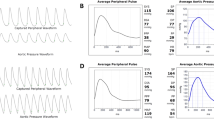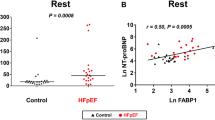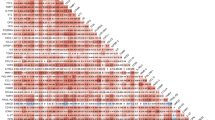Abstract
Acute myocardial infarction (AMI) is a life-threatening event. Even with timely treatment, acute ischemic myocardial injury and ensuing ischemia reperfusion injury (IRI) can still be difficult issues to tackle. Apart from radiological and other auxiliary examinations, laboratory tests of applicable cardiac biomarkers are also necessary for early diagnosis and close monitoring of this disorder. Heart-type fatty acid binding protein (H-FABP), which mainly exists inside cardiomyocytes, has recently emerged as a potentially promising biomarker for myocardial injury. In this review we discuss the sensitivity and specificity of H-FABP in the assessment of myocardial injury and IRI, especially in the early stage, and its long-term prognostic value in comparison with other commonly used cardiac biomarkers, including myoglobin (Mb), cardiac troponin I (cTnI), creatine kinase MB (CK-MB), C-reactive protein (CRP), glycogen phosphorylase isoenzyme BB (GPBB), and high-sensitivity cardiac troponin T (hs-cTnT). The potential and value of combined application of H-FABP with other biomarkers are also discussed. Finally, the prospect of H-FABP is summarized; several technical issues are discussed to facilitate wider application of H-FABP in clinical practice.
Similar content being viewed by others
Log in or create a free account to read this content
Gain free access to this article, as well as selected content from this journal and more on nature.com
or
References
Mullasari AS, Balaji P, Khando T. Managing complications in acute myocardial infarction. J Assoc Physicians India 2011; 59: 43–8.
Hausenloy DJ, Yellon DM. Myocardial ischemia-reperfusion injury: a neglected therapeutic target. J Clin Invest 2013; 123: 92–100.
Lozano R, Naghavi M, Foreman K, Lim S, Shibuya K, Aboyans V, et al. Global and regional mortality from 235 causes of death for 20 age groups in 1990 and 2010: a systematic analysis for the Global Burden of Disease Study 2010. Lancet 2012; 380: 2095–128.
Chmurzynska A. The multigene family of fatty acid-binding proteins (FABPs): function, structure and polymorphism. J Appl Genet 2006; 47: 39–48.
Glatz JF, van Bilsen M, Paulussen RJ, Veerkamp JH, van der Vusse GJ, Reneman RS. Release of fatty acid-binding protein from isolated rat heart subjected to ischemia and reperfusion or to the calcium paradox. Biochim Biophys Acta 1988; 961: 148–52.
Ecollan P, Collet JP, Boon G, Tanguy ML, Fievet ML, Haas R, et al. Pre-hospital detection of acute myocardial infarction with ultra-rapid human fatty acid-binding protein (H-FABP) immunoassay. Int J Cardiol 2007; 119: 349–54.
Huang Z, Zhong X, Irwin MG, Ji S, Wong GT, Liu Y, et al. Synergy of isoflurane preconditioning and propofol postconditioning reduces myocardial reperfusion injury in patients. Clin Sci (Lond) 2011; 121: 57–69.
GBD 2015 Mortality and Causes of Death Collaborators. Global, regional, and national life expectancy, all-cause mortality, and cause-specific mortality for 249 causes of death, 1980-2015: a systematic analysis for the Global Burden of Disease Study 2015. Lancet 2016; 388: 1459–544.
Puymirat E. Epidemiology of coronary artery disease. Rev Prat 2015; 65: 317–20.
Okrainec K, Banerjee DK, Eisenberg MJ. Coronary artery disease in the developing world. Am Heart J 2004; 148: 7–15.
Carden DL, Granger DN. Pathophysiology of ischaemia-reperfusion injury. J Pathol 2000; 190: 255–66.
Oosterlinck W, Dresselaers T, Geldhof V, Nevelsteen I, Janssens S, Himmelreich U, et al. Diabetes mellitus and the metabolic syndrome do not abolish, but might reduce, the cardioprotective effect of ischemic postconditioning. J Thorac Cardiovasc Surg 2013; 145: 1595–602.
Yin X, Zheng Y, Zhai X, Zhao X, Cai L. Diabetic inhibition of preconditioning- and postconditioning-mediated myocardial protection against ischemia/reperfusion injury. Exp Diabetes Res 2012; 2012: 198048.
Lejay A, Fang F, John R, Van JA, Barr M, Thaveau F, et al. Ischemia reperfusion injury, ischemic conditioning and diabetes mellitus. J Mol Cell Cardiol 2016; 91: 11–22.
Li H, Yao W, Liu Z, Xu A, Huang Y, Ma XL, et al. Hyperglycemia abrogates ischemic postconditioning cardioprotection by impairing AdipoR1/Caveolin-3/STAT3 signaling in diabetic rats. Diabetes 2016; 65: 942–55.
Ordway GA, Garry DJ. Myoglobin: an essential hemoprotein in striated muscle. J Exp Biol 2004; 207: 3441–6.
Apple FS. Creatine kinase isoforms and myoglobin: early detection of myocardial infarction and reperfusion. Coron Artery Dis 1999; 10: 75–9.
Wang S, Qin L, Wu T, Deng B, Sun Y, Hu D, et al. Elevated cardiac markers in chronic kidney disease as a consequence of hyperphosphatemia-induced cardiac myocyte injury. Med Sci Monit 2014; 20: 2043–53.
Beuerle JR, Azzazy HM, Styba G, Duh SH, Christenson RH. Characteristics of myoglobin, carbonic anhydrase III and the myoglobin/carbonic anhydrase III ratio in trauma, exercise, and myocardial infarction patients. Clin Chim Acta 2000; 294: 115–28.
Tanasijevic JM. Non-invasive assessment of coronary artery patency after thrombolysis using serum myoglobin measurements. Prilozi 2007; 28: 5–11.
Roych C, Magioncalda A, Sanfelici D, Mattiauda C, Cavazzana C, Mellini M, et al. Diagnostic and prognostic value of radioimmunologic determination of myoglobin in myocardial infarction. Cardiologia 1982; 27: 493–6.
Tashmatova A, Staroverov, II, Titov VN, Ruda M. Blood myoglobin in the diagnosis and prognosis of acute myocardial infarct. Lab Delo 1986; (3): 145–9.
Venge P. The diagnostic and prognostic value of serum-myoglobin determinations in acute myocardial infarction. Ups J Med Sci 1983; 88: 205–11.
Wilson SR, Sabatine MS, Braunwald E, Sloan S, Murphy SA, Morrow DA. Detection of myocardial injury in patients with unstable angina using a novel nanoparticle cardiac troponin I assay: observations from the PROTECT-TIMI 30 Trial. Am Heart J 2009; 158: 386–91.
Tanasijevic MJ, Cannon CP, Antman EM. The role of cardiac troponin-I (cTnI) in risk stratification of patients with unstable coronary artery disease. Clin Cardiol 1999; 22: 13–6.
Tiwari RP, Jain A, Khan Z, Kohli V, Bharmal RN, Kartikeyan S, et al. Cardiac troponins I and T: molecular markers for early diagnosis, prognosis, and accurate triaging of patients with acute myocardial infarction. Mol Diagn Ther 2012; 16: 371–81.
Myint PK, Kwok CS, Bachmann MO, Stirling S, Shepstone L, Zaman MJ. Prognostic value of troponins in acute coronary syndrome depends upon patient age. Heart 2014; 100: 1583–90.
Li WJ, Chen XM, Nie XY, Lin XX, Cheng YJ, Hu CH, et al. Early diagnostic and prognostic utility of high-sensitive troponin assays in acute myocardial infarction: a meta-analysis. Intern Med J 2015; 45: 748–56.
Benamer H, Steg PG, Benessiano J, Vicaut E, Gaultier CJ, Boccara A, et al. Comparison of the prognostic value of C-reactive protein and troponin I in patients with unstable angina pectoris. Am J Cardiol 1998; 82: 845–50.
Grande P, Naestoft J, Christiansen C. An easy and reliable estimation of acute myocardial infarct size from serum CK-MB measurements. Eur J Cardiol 1980; 11: 71–7.
Roberts R, Ambos HD, Sobel BE. Estimation of infarct size with MB rather than total CK. Int J Cardiol 1983; 2: 479–92.
Mills JS, Mahaffey KW, Lokhnygina Y, Nicolau JC, Ruzyllo W, Adams PX, et al. Prediction of enzymatic infarct size in ST-segment elevation myocardial infarction. Coron Artery Dis 2012; 23: 118–25.
Dohi T, Maehara A, Brener SJ, Genereux P, Gershlick AH, Mehran R, et al. Utility of peak creatine kinase-MB measurements in predicting myocardial infarct size, left ventricular dysfunction, and outcome after first anterior wall acute myocardial infarction (from the INFUSE-AMI trial). Am J Cardiol 2015; 115: 563–70.
Luo Y, Pan YZ, Zeng C, Li GL, Lei XM, Liu Z, et al. Altered serum creatine kinase level and cardiac function in ischemia-reperfusion injury during percutaneous coronary intervention. Med Sci Monit 2011; 17: CR474–9.
Holmberg FE, Ottas KA, Andreasen C, Perko MJ, Moller CH, Engstrom T, et al. Conditioning techniques and ischemic reperfusion injury in relation to on-pump cardiac surgery. Scand Cardiovasc J 2014; 48: 241–8.
Bagai A, Schulte PJ, Granger CB, Mahaffey KW, Christenson RH, Bell G, et al. Prognostic implications of creatine kinase-MB measurements in ST-segment elevation myocardial infarction patients treated with primary percutaneous coronary intervention. Am Heart J 2014; 168: 503–11.e2.
Lopes RD, Lokhnygina Y, Hasselblad V, Newby KL, Yow E, Granger CB, et al. Methods of creatine kinase-MB analysis to predict mortality in patients with myocardial infarction treated with reperfusion therapy. Trials 2013; 14: 123.
Domanski MJ. Prognostic implications of troponin T and creatine kinase-MB elevation after coronary artery bypass grafting. Am Heart J 2012; 164: 636–7.
Saadeddin SM, Habbab MA, Sobki SH, Ferns GA. Biochemical detection of minor myocardial injury after elective, uncomplicated, successful percutaneous coronary intervention in patients with stable angina: clinical outcome. Ann Clin Biochem 2002; 39: 392–7.
Harris BM, Nageh T, Marsden JT, Thomas MR, Sherwood RA. Comparison of cardiac troponin T and I and CK-MB for the detection of minor myocardial damage during interventional cardiac procedures. Ann Clin Biochem 2000; 37: 764–9.
Melamed KH, Goldhaber SZ. Cardiology Patient Page: inflammation and myocardial infarction. Circulation 2014; 130: e334–6.
Auer J, Berent R, Lassnig E, Eber B. C-reactive protein and coronary artery disease. Jpn Heart J 2002; 43: 607–19.
Haverkate F, Thompson SG, Pyke SD, Gallimore JR, Pepys MB. Production of C-reactive protein and risk of coronary events in stable and unstable angina. European Concerted Action on Thrombosis and Disabilities Angina Pectoris Study Group. Lancet 1997; 349: 462–6.
Mather AN, Fairbairn TA, Artis NJ, Greenwood JP, Plein S. Relationship of cardiac biomarkers and reversible and irreversible myocardial injury following acute myocardial infarction as determined by cardiovascular magnetic resonance. Int J Cardiol 2013; 166: 458–64.
Liu D, Qi X, Li Q, Jia W, Wei L, Huang A, et al. Increased complements and high-sensitivity C-reactive protein predict heart failure in acute myocardial infarction. Biomed Rep 2016; 5: 761–5.
Krause EG, Rabitzsch G, Noll F, Mair J, Puschendorf B. Glycogen phosphorylase isoenzyme BB in diagnosis of myocardial ischaemic injury and infarction. Mol Cell Biochem 1996; 160–1: 289–95.
Mair J. Progress in myocardial damage detection: new biochemical markers for clinicians. Crit Rev Clin Lab Sci 1997; 34: 1–66.
Rabitzsch G, Mair J, Lechleitner P, Noll F, Hofmann U, Krause EG, et al. Immunoenzymometric assay of human glycogen phosphorylase isoenzyme BB in diagnosis of ischemic myocardial injury. Clin Chem 1995; 41: 966–78.
Mion MM, Novello E, Altinier S, Rocco S, Zaninotto M, Plebani M. Analytical and clinical performance of a fully automated cardiac multi-markers strategy based on protein biochip microarray technology. Clin Biochem 2007; 40: 1245–51.
McCann CJ, Glover BM, Menown IB, Moore MJ, McEneny J, Owens CG, et al. Novel biomarkers in early diagnosis of acute myocardial infarction compared with cardiac troponin T. Eur Heart J 2008; 29: 2843–50.
Keller T, Zeller T, Ojeda F, Tzikas S, Lillpopp L, Sinning C, et al. Serial changes in highly sensitive troponin I assay and early diagnosis of myocardial infarction. JAMA 2011; 306: 2684–93.
Lillpopp L, Tzikas S, Ojeda F, Zeller T, Baldus S, Bickel C, et al. Prognostic information of glycogen phosphorylase isoenzyme BB in patients with suspected acute coronary syndrome. Am J Cardiol 2012; 110: 1225–30.
Reichlin T, Hochholzer W, Bassetti S, Steuer S, Stelzig C, Hartwiger S, et al. Early diagnosis of myocardial infarction with sensitive cardiac troponin assays. N Engl J Med 2009; 361: 858–67.
Giannitsis E, Kurz K, Hallermayer K, Jarausch J, Jaffe AS, Katus HA. Analytical validation of a high-sensitivity cardiac troponin T assay. Clin Chem 2010; 56: 254–61.
Giner-Caro JA, Caballero L, Casas-Pina T, Pastor-Perez F, Garrido-Bravo IP, Sanchez-Mas J, et al. High sensitive cardiac troponin T in the management of uncertain chest pain. Int J Cardiol 2013; 168: 4422–3.
Durante A. The value of elevated high-sensitive troponin T. Am Heart J 2011; 161: e33.
Irfan A, Twerenbold R, Reiter M, Reichlin T, Stelzig C, Freese M, et al. Determinants of high-sensitivity troponin T among patients with a noncardiac cause of chest pain. Am J Med 2012; 125: 491–8.e1.
Ndrepepa G, Braun S, Mehilli J, Birkmeier KA, Byrne RA, Ott I, et al. Prognostic value of sensitive troponin T in patients with stable and unstable angina and undetectable conventional troponin. Am Heart J 2011; 161: 68–75.
Reichlin T, Twerenbold R, Reiter M, Steuer S, Bassetti S, Balmelli C, et al. Introduction of high-sensitivity troponin assays: impact on myocardial infarction incidence and prognosis. Am J Med 2012; 125: 1205–13.e1.
Vaidya A, Severens JL, Bongaerts BW, Cleutjens KB, Nelemans PJ, Hofstra L, et al. High-sensitive troponin T assay for the diagnosis of acute myocardial infarction: an economic evaluation. BMC Cardiovasc Disord 2014; 14: 77.
Jirak P, Fejzic D, Paar V, Wernly B, Pistulli R, Rohm I, et al. Influences of Ivabradine treatment on serum levels of cardiac biomarkers sST2, GDF-15, suPAR and H-FABP in patients with chronic heart failure. Acta Pharmacol Sin 2017. doi: 10.1038/aps.2017.167.
Schernthaner C, Lichtenauer M, Wernly B, Paar V, Pistulli R, Rohm I, et al. Multibiomarker analysis in patients with acute myocardial infarction. Eur J Clin Invest 2017; 47: 638–48.
Chen K, Chen QJ, Wang LJ, Liu ZH, Zhang Q, Yang K, et al. Increment of HFABP level in coronary artery in-stent restenosis segments in diabetic and nondiabetic minipigs: HFABP overexpression promotes multiple pathway-related inflammation, growth and migration in human vascular smooth muscle cells. J Vasc Res 2016; 53: 27–38.
Kleine AH, Glatz JF, Van Nieuwenhoven FA, Van der Vusse GJ. Release of heart fatty acid-binding protein into plasma after acute myocardial infarction in man. Mol Cell Biochem 1992; 116: 155–62.
Ishii J, Wang JH, Naruse H, Taga S, Kinoshita M, Kurokawa H, et al. Serum concentrations of myoglobin vs human heart-type cytoplasmic fatty acid-binding protein in early detection of acute myocardial infarction. Clin Chem 1997; 43: 1372–8.
Pyati AK, Devaranavadagi BB, Sajjannar SL, Nikam SV, Shannawaz M. Sudharani. Heart-type fatty acid binding protein: a better cardiac biomarker than CK-MB and myoglobin in the early diagnosis of acute myocardial infarction. J Clin Diagn Res 2015; 9: BC08–11.
Kagawa Y, Toyofuku M, Masaoka Y, Muraoka Y, Okimoto T, Otsuka M, et al. Comparison of heart-type fatty acid binding protein and sensitive troponin for the diagnosis of early acute myocardial infarction. Int J Cardiol 2013; 166: 347–51.
Vupputuri A, Sekhar S, Krishnan S, Venugopal K, Natarajan KU. Heart-type fatty acid-binding protein (H-FABP) as an early diagnostic biomarker in patients with acute chest pain. Indian Heart J 2015; 67: 538–42.
Garcia-Valdecasas S, Ruiz-Alvarez MJ, Garcia De Tena J, De Pablo R, Huerta I, Barrionuevo M, et al. Diagnostic and prognostic value of heart-type fatty acid-binding protein in the early hours of acute myocardial infarction. Acta?Cardiol 2011; 66: 315–21.
Ozdemir M, Durakoglugil E, Gulbahar O, Turkoglu S, Sancak B, Pasaoglu H, et al. Heart fatty acid binding protein and myoglobin after reperfusion of acute myocardial infarction. Acta?Cardiol 2007; 62: 473–8.
Das DK, Barua PK, Jones RM. Release of fatty acid-binding protein from ischemic-reperfused rat heart and its prevention by mepacrine. Biochim Biophys Acta 1991; 1073: 394–401.
de Lemos JA, Antman EM, Morrow DA, Llevadot J, Giugliano RP, Coulter SA, et al. Heart-type fatty acid binding protein as a marker of reperfusion after thrombolytic therapy. Clin Chim Acta 2000; 298: 85–97.
Hayashida N, Chihara S, Akasu K, Oda T, Tayama E, Kai E, et al. Plasma and urinary levels of heart fatty acid-binding protein in patients undergoing cardiac surgery. Jpn Circ J 2000; 64: 18–22.
Wong GT, Huang Z, Ji S, Irwin MG. Remifentanil reduces the release of biochemical markers of myocardial damage after coronary artery bypass surgery: a randomized trial. J Cardiothorac Vasc Anesth 2010; 24: 790–6.
Suzuki M, Hori S, Noma S, Kobayashi K. Prognostic value of a qualitative test for heart-type fatty acid-binding protein in patients with acute coronary syndrome. Int Heart J 2005; 46: 601–6.
O'Donoghue M, de Lemos JA, Morrow DA, Murphy SA, Buros JL, Cannon CP, et al. Prognostic utility of heart-type fatty acid binding protein in patients with acute coronary syndromes. Circulation 2006; 114: 550–7.
Ishii J, Ozaki Y, Lu J, Kitagawa F, Kuno T, Nakano T, et al. Prognostic value of serum concentration of heart-type fatty acid-binding protein relative to cardiac troponin T on admission in the early hours of acute coronary syndrome. Clin Chem 2005; 51: 1397–404.
Kilcullen N, Viswanathan K, Das R, Morrell C, Farrin A, Barth JH, et al. Heart-type fatty acid-binding protein predicts long-term mortality after acute coronary syndrome and identifies high-risk patients across the range of troponin values. J Am Coll Cardiol 2007; 50: 2061–7.
Viswanathan K, Kilcullen N, Morrell C, Thistlethwaite SJ, Sivananthan MU, Hassan TB, et al. Heart-type fatty acid-binding protein predicts long-term mortality and re-infarction in consecutive patients with suspected acute coronary syndrome who are troponin-negative. J Am Coll Cardiol 2010; 55: 2590–8.
Matsumoto S, Nakatani D, Sakata Y, Suna S, Shimizu M, Usami M, et al. Elevated serum heart-type fatty acid-binding protein in the convalescent stage predicts long-term outcome in patients surviving acute myocardial infarction. Circ J 2013; 77: 1026–32.
Acknowledgements
The research work of the authors was supported by Research Grants Council (RGC)/GRF grants (17158616M and 17121315M).
Author information
Authors and Affiliations
Corresponding authors
Rights and permissions
About this article
Cite this article
Ye, Xd., He, Y., Wang, S. et al. Heart-type fatty acid binding protein (H-FABP) as a biomarker for acute myocardial injury and long-term post-ischemic prognosis. Acta Pharmacol Sin 39, 1155–1163 (2018). https://doi.org/10.1038/aps.2018.37
Received:
Accepted:
Published:
Issue date:
DOI: https://doi.org/10.1038/aps.2018.37
Keywords
This article is cited by
-
Fatty acid-binding proteins as potential biomarkers for human cancer prognosis
Scientific Reports (2025)
-
Prognostic value of a combination of cardiac biomarkers and risk indices for major adverse cardiovascular events following non-cardiac surgery in geriatric patients: a prospective cohort study
Scientific Reports (2025)
-
A novel rapid rule-out protocol for acute chest pain using H-FABP point-of-care testing
Scientific Reports (2025)
-
H-FABP as a Biomarker in Transient Ischemic Attack
Journal of Cardiovascular Translational Research (2025)
-
An electrochemiluminescence biosensor based on silver-cysteine nanorod as an emitter and AgNP-decorated FeMoOν as a signal amplifier for sensitive detection of heart-type fatty acid binding protein
Microchimica Acta (2025)



